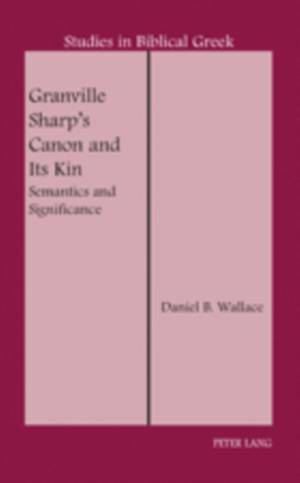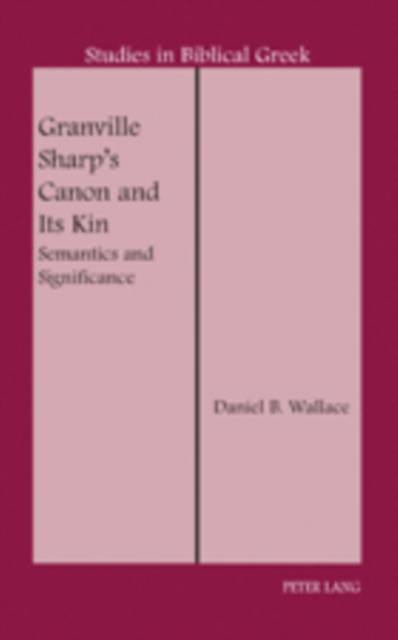
- Afhalen na 1 uur in een winkel met voorraad
- Gratis thuislevering in België vanaf € 30
- Ruim aanbod met 7 miljoen producten
- Afhalen na 1 uur in een winkel met voorraad
- Gratis thuislevering in België vanaf € 30
- Ruim aanbod met 7 miljoen producten
Zoeken
€ 80,95
+ 161 punten
Omschrijving
Granville Sharp s Canon and Its Kin explains that the semantics of the article-substantive-KAI-substantive construction (TSKS) have been largely misunderstood and that this misunderstanding has adversely impacted the exegesis of several theologically significant texts. This issue is addressed from three angles: historical investigation, linguistic-phenomenological analysis of the construction, and exegetical implications. The reasons for the misunderstanding are traced historically; a better comprehension of the semantics of the construction is established by an examination of primary literature in the light of linguistic theory; and the implications of this analysis are applied to a number of passages in the New Testament.
Historically, the treatment begins with a clear grammatical principle articulated by Granville Sharp, and it ends with the present-day confusion. This book includes a detailed examination of the New Testament data and other Ancient Greek literature, which reveals that Sharp s rule has a general validity in the language. Lastly, a number of exegetically significant texts that are affected by the linguistic-phenomenological investigation are discussed in detail. This enlightening text is a valuable resource for undergraduate and graduate students of religion, linguistics, history, and Greek."
Historically, the treatment begins with a clear grammatical principle articulated by Granville Sharp, and it ends with the present-day confusion. This book includes a detailed examination of the New Testament data and other Ancient Greek literature, which reveals that Sharp s rule has a general validity in the language. Lastly, a number of exegetically significant texts that are affected by the linguistic-phenomenological investigation are discussed in detail. This enlightening text is a valuable resource for undergraduate and graduate students of religion, linguistics, history, and Greek."
Specificaties
Betrokkenen
- Auteur(s):
- Uitgeverij:
Inhoud
- Aantal bladzijden:
- 350
- Taal:
- Engels
- Reeks:
- Reeksnummer:
- nr. 14
Eigenschappen
- Productcode (EAN):
- 9780820433424
- Verschijningsdatum:
- 25/11/2008
- Uitvoering:
- Hardcover
- Formaat:
- Ongenaaid / garenloos gebonden
- Afmetingen:
- 155 mm x 231 mm
- Gewicht:
- 589 g

Alleen bij Standaard Boekhandel
+ 161 punten op je klantenkaart van Standaard Boekhandel
Beoordelingen
We publiceren alleen reviews die voldoen aan de voorwaarden voor reviews. Bekijk onze voorwaarden voor reviews.











